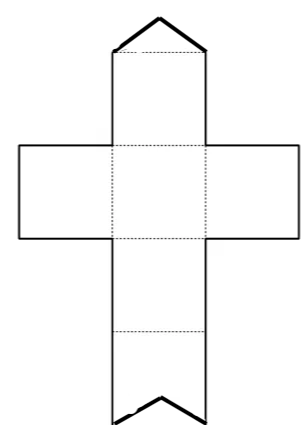Inspired by the Fiddler on the Proof (formerly The Riddler), X’s Puzzle Corner aims to produce a weekly puzzle for readers that enjoy math, probability, and algorithms. Please submit your solution! Solutions will be accepted until 11 pm the following Sunday after the puzzle is posted (in this case 10/20/24). While it isn’t required, I encourage you to opt to have your solution shared so that we all get the chance to see how others thought about and attempted the problem!
The answers of all those that volunteered their solutions will be posted around Wednesday at 10 am.
In many cases, I expect the readers will be better puzzlers than me so I make no guarantees the solutions are correct. I also make no promises about having worked out the solutions to the puzzles ahead of time so it may be the case that they’re very challenging. Part of the fun is finding out!
Last week we were exploring the number of different ways we cut a paper so that we could fold it and adhere the necessary edges to create a cube. While it wasn’t my intention to include the possibilities of shapes that doesn’t correspond to cuts along the edges of a face, very astute readers may have realized that these were possible. The figure below helps visualize such a case.
But there’s nothing special about that squiggly cutline. Consider a similar unfolding.
And obviously there is an infinite number of possibilities for unfoldings of this kind. Nevertheless, I think we can all recognize that—while this is technically distinct from above—in some sense it is equivalent.
This week I’d like for us to explore these types of unfoldings, which are called general unfoldings (see section 3 of the link) in the literature. More specifically, I’m puzzling over whether there is a way we can group together these countless different unfoldings into a finite set of equivalence classes.
So for this week, I want to try something new and pose a more open-ended problem:
Is there a logical/meaningful finite set of equivalence classes we can use to group the infinite number of general unfoldings into?
I’ve only briefly perused the literature to see if such a set of classes exist so it may be that there is published results on the topic. But the goal of X’s puzzle corner is to do some fun math, so regardless, let’s try this problem out!
Good luck!
Please submit your thoughts, progress, or answers here.






It looks like this never got a solution, so I'll just make some comments about this part of the problem here.
In particular, the biggest obstruction to getting a finite classification that doesn't lump too many things together is as follows: start with the standard "Latin cross" unfolding, which was the base of the one above. Note, in particular, the middle four squares forming a rectangle whose top is connected to its bottom.
That rectangle can be transformed by shearing such that the left and right sides are congruent to the original and connect in the same way, but the middle column instead wraps around like a cardboard tube. It's possible to make this wrap around an arbitrarily large number of times, and this number is robust to topological deformations like the one described above.
I do have a more full answer that should describe all those using combinatorial and geometric data, but it deserves a proper write-up instead of just a Substack comment.